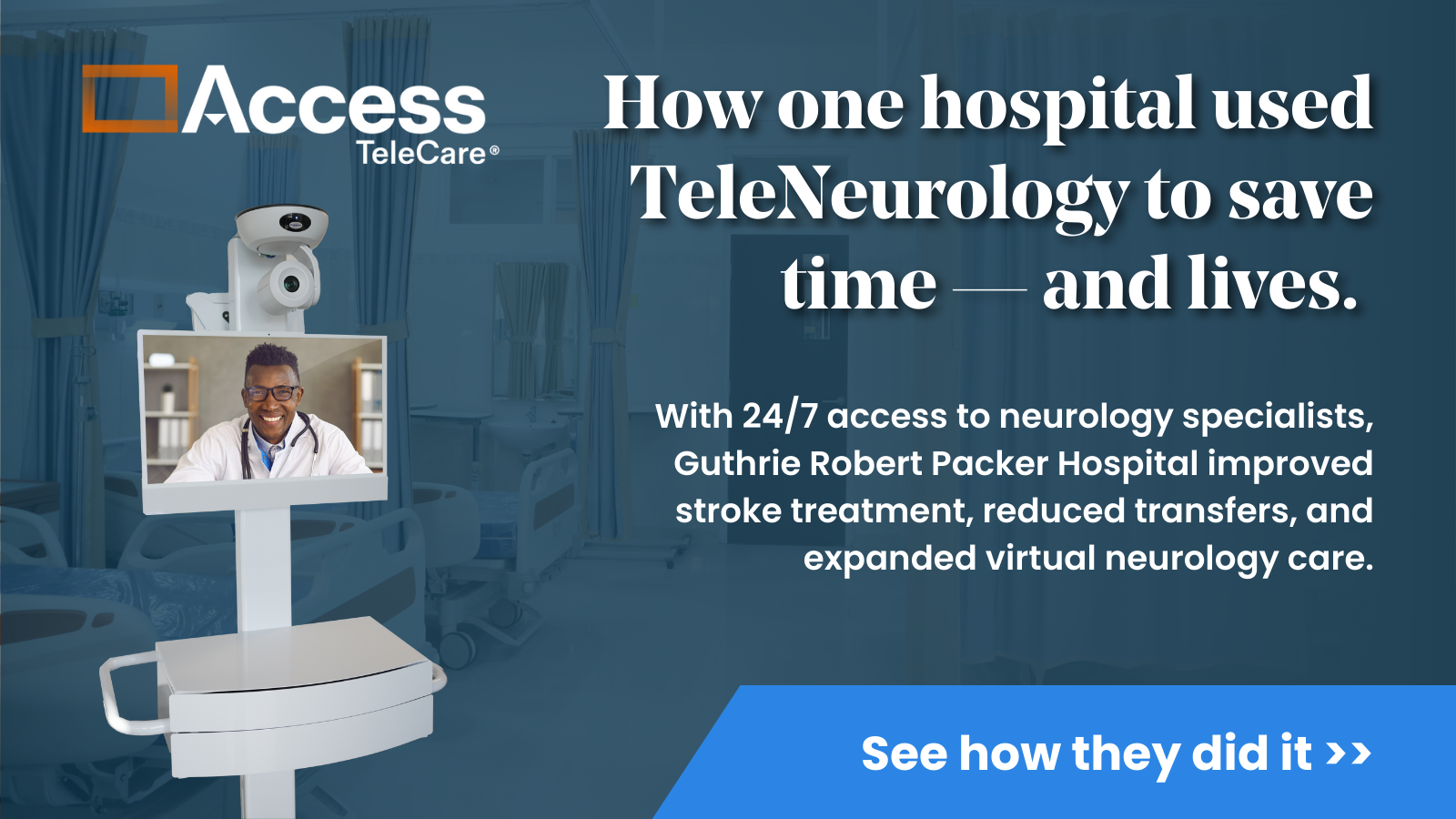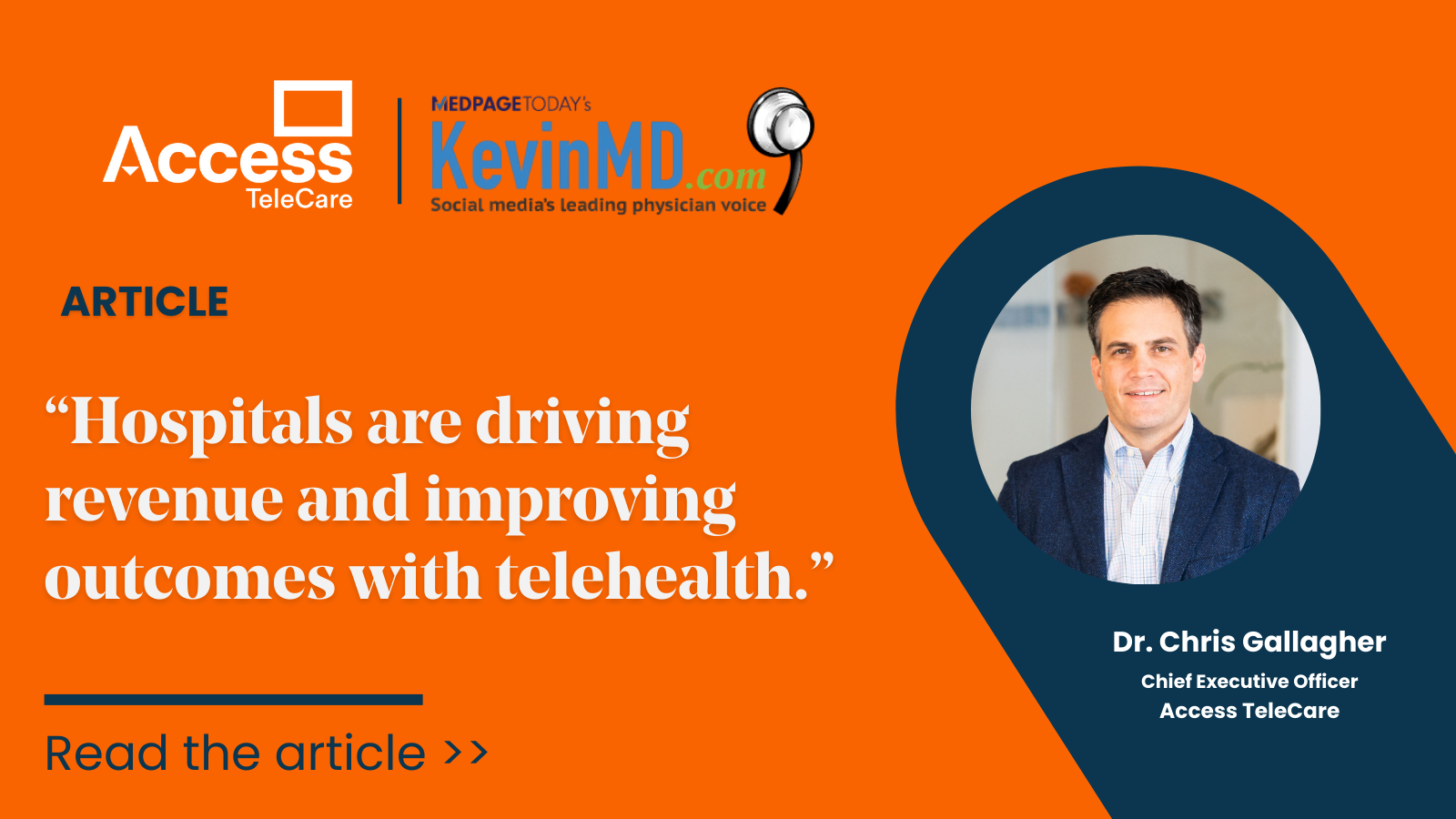Although the risk of a hemorrhagic transformation requiring surgical intervention is low following IV thrombolytics administration for patients experiencing an acute ischemic stroke, hospitals commonly transfer post-thrombolytic patients to a higher level of care specifically for the neurosurgical capabilities.
Most post-stroke patients will never need neurosurgical intervention. Just 44 of nearly 800,000 strokes in the U.S. would require neurosurgical intervention following IV tPA administration, according to a 2013 study. The absolute probability of receiving neurosurgical intervention if intracranial bleeding was observed after IV thrombolytics in their study sample was miniscule at just 0.175 percent (Journal of Stroke and Cerebrovascular Diseases).
Access to teleNeurosurgery consultations can support on-site hospital clinicians’ decision-making for post-thrombolytic patients. Neurosurgical expertise can identify patients who are most likely to need surgical intervention – and assist in initiating transfers for those patients promptly and appropriately to a higher level of care.
4 Benefits of Access TeleCare’s teleNeurosurgery Consultation
-
Reduce unnecessary transfers
By using teleNeurosurgery consultations, hospitals can significantly reduce the need for transferring post-thrombolytic stroke patients away from their communities for care. Keeping patients close to their homes for specialty neurological care helps hospitals build trust with patients and elevate their reputation as expert providers in their communities.
-
Cost-Efficiency for hospitals and patients
Access TeleCare’s teleNeurosurgery programs help providers avoid the costs associated with transferring post-thrombolytic stroke patients by streamlining the treatment process and minimizing unnecessary transfers. Likewise, patients and their families can avoid travel expenses, missed time from work, and other costs associated with traveling far from home for care.
-
Improved utilization of resources
Access TeleCare’s teleNeurosurgery programs help on-site teams optimize the use of available resources when treating patients who require thrombolytic and post-thrombolytic care, directing on-site teams to where they are needed most and identifying patients who do not require a transfer or neurosurgical intervention.
-
Increased accessibility for patients
TeleNeurosurgery programs help bridge gaps in care for patients in both rural and urban care settings. By making expert neurosurgical consultations available to on-site teams regardless of the local availability of neurology or neurosurgery experts, Access TeleCare brings more patients closer to timely, expert care.
Learn more about our teleNeurosurgery programs here.








